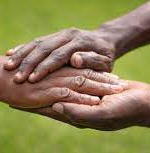A Deeper Understanding
The Chevrah Kadisha is the "holy society" who care for the dead and provide services to help families dealing with death. First mentioned in tractate Sotah in the Talmud (circa 200 BCE – 500 CE), and documented in mid-16th century Prague, chevrot have honored our dead through a range of actions.
This spectrum of activities can be seen in the Nineteen murals from the Burial Society of Prague, painted in the late 1700’s. The Chevrah Kadisha provides a continuum of care to the dying, the dead, and to the mourners. The work of the Chevrah Kadisha is unconditional love, considered the highest level of kindness, because the recipient of the caring (the deceased) are no longer able to express thanks or appreciation.
The traditions honored by the Chevrah Kadisha not only support the soul as it transitions to the spiritual world but also provide comfort to the grieving mourners.
Overview
The Chevrah Kadisha is guided by a desire to bring honor to the dead by creating an atmosphere of respect, dignity, and reverence. The prayers and readings recited while preparing the deceased have both intellectual and spiritual value for all involved.
At the heart of the Chevrah Kadisha work is the taharah, which involves the loving preparation of the deceased for burial. It is done in a way which brings honor to both the body and the soul. Some Chevrot Kadisha (plural) also provide shmirah. During shmirah the body is kept company and not left alone until burial. This is thought to be very comforting for the soul and for the family.
To simply describe taharah as the traditional Jewish practice of washing, purifying and dressing the deceased is technically correct. To just describe shmirah as the traditional Jewish practice of watching and guarding the deceased is also technically correct. But both definitions are woefully inadequate. Taharah and shmirah are powerful emotional, psychological, and spiritual rituals that can challenge our acceptance of death denial, shake us from the complacency of seeing death around us and not engaging, and make clear to us the importance of valuing our life. Taharah is physical, but it is also emotional and spiritual. Shmirah may appear to be mundane, but it is quite spiritual as well as intellectually stimulating. Both can be uncomfortable, but can also be sublimely beautiful.
The most important principle of Chevrah Kadisha work is to honor our dead through an atmosphere of respect, dignity, and reverence. The prayers and readings recited during the rituals have both intellectual and spiritual value for both the deceased and the members of the chevrah team.
Additional Chevrah Kadisha tasks may vary from community to community. For example, a Chevrah Kadisha may help by preparing meals of condolence, arranging for shiva minyanim, organizing community educational events about death and mourning, and performing other forms of community support. Some chevrot even sew their own tachrichim and build their own aronot.
Details
Today, many Chevrot Kadisha (plural) in North America focus their sacred efforts on the two central rituals of taharah and shmirah.
The taharah team of the Chevrah Kadisha prepares the body lovingly and respectfully with the intention of assisting the soul on its journey from this physical world. This beautiful ritual includes physical washing of the body and pouring of water accompanied by a powerful spiritual liturgy . The entire process is performed with respectful kavanah.
The practice of shmirah, performed by shomrim, ensures that the deceased is never left alone before burial. Traditionally the shomrim read from the Psalms and other appropriate texts.
The modern community organization we call the Chevrah Kadisha has been developing over the past two millennia. Jews have been taking care of their dead in respectful and loving ways throughout our history. These practices were first codified in 1626 when the Ma’avar Yabbok was published. Jews have been adapting these practices for centuries in each community and today the same liturgy and procedures are in place in much of the Jewish world.
Below are links to a historical timeline showing Jewish world events along with specific events in the evolution of Chevrah Kadisha practices, with a PowerPoint presentation discussing this timeline and the history of Chevrah Kadisha.
- Click here to view the timeline
- Click here to view the PowerPoint presentation that walks through this history
Resources to Learn More
- Introduction to Chevrah Kadisha and Taharah, an article published in the NM Jewish Journal by Rick Light.
- Introduction to Chevrah Kadisha video by the Plaza Jewish Community Chapel in NYC.
- Natural Transitions Magazine: Holy Friends – Jewish Way of Death, by Holly Blue Hawkins
- YouTube video: MyJewishLearning – Jewish Traditions Around Death
- From One Life to the Next Life, by Elissa Felder
- Jewish Rites of Death: Stories of Beauty and Transformation, by Richard A. Light
A Chevrah Kadisha is the traditional Jewish organization that provides care for the dead and supports and assists families and communities at the end of life.
Click on icons below to learn about this topic from different perspectives.
Practical
Emotional
Textual
Spiritual
Chevrah Kadisha from the Practical / Physical Perspective
The tasks that the Chevrah Kadisha perform may vary from community to community. They include caring for the deceased, and varying levels of involvement in the entire continuum of Jewish end-of-life practices. For example, a Chevrah Kadisha may help in preparing the meal of condolence for the mourners, arrange shiva minyanim, organize community educational events about death and dying, and perform other forms of community support for those experiencing death. Some communities even sew their own tachrichim and/or build their own aronot.


